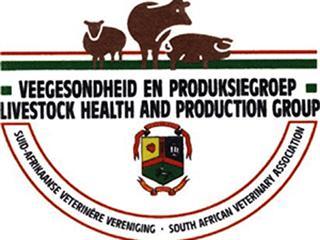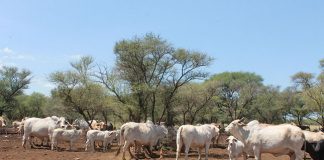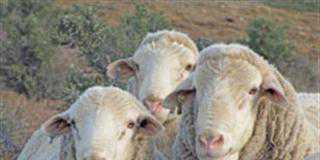
- Before putting livestock in vleis to graze make sure your animals aren’t harbouring liver fluke as their eggs will hatch and infect the intermediate hosts (water snails), which will get the life cycle of liver fluke going. Discuss control programmes with your vet.
- Conical fluke may also catch you unaware as they too need water snails as intermediate hosts. Symptoms are usually projectile diarrhoea two to three weeks after animals are moved into areas where there are water sources.
- Diseases transmitted by ticks and insects were still rife, and include African and Asiatic red water, anaplasmosis, lumpy skin disease and blue tongue. Discuss and update your vaccination programme with your vet. Remember to place your order for vaccines well in advance as these are usually out of stock when disease outbreaks occur.
The first cases of Karoo paralysis have been reported. The cold spells which trigger the disease seem to have come earlier this year. Don’t forget: dipping the animals with an amidine detaches ticks immediately.
If you haven’t tested the blue ticks on your farm for resistance to acaricides now is the time so that you can plan which groups to use during the next tick season. These are: organophosphates, amidines, pyrethroids, macrocyclic lactones and acaricide growth regulators. Discuss your control programme with your vet so as to prevent selection for resistance and to ensure enzootic stability against tick-borne diseases.
- As we’re now going into winter and food becomes scarce some will be feeding chicken litter. Have you vaccinated your cattle against botulism? Remember that you have to give boosters as this vaccine contains a toxoid. Examine all troughs regularly to make sure there are no dead birds or rats in the water which may contain the deadly toxin. Bales may also contain small carcasses.
- With big fluctuations between day and night temperatures and dusty conditions, outbreaks of pneumonia occurred in sheep and cattle. Vaccines against Mannheimia haemolytica, Pasteurella multocida, parainfluenza 3, infectious bovine rhinotracheitis, bovine viral diarrhoea and bovine respiratory syncytial virus are available. Contact your vet for advice.
- It’s clear that biosecurity measures are not up to standard. Farmers are still bringing livestock infected with brucellosis, trichomonosis, vibriosis, enzootic bovine leukosis, sheep scab and abscesses into herds without making sure the animals are disease-free. It is imperative to discuss and implement biosecurity measures with the help of your vet.
- Of great concern is the number of mortalities reported due to bovine malignant catarrh (snotsiekte). Wildebeest and cattle should be kept at least 1km apart.
- The following poisonings were reported: Urea, Lantana, prussic acid, Amaranthus (nitrate), stootsiekte (Cotula nigellifolia), Cynanchum (monkey rope), Thesium (witstorm), onion and lupin.
Feedlot report
Cattle
- An increase in pneumonia cases was seen due to the changing weather and the big fluctuation between day and night temperatures.
- Lumpy skin disease cases occurred in feedlots in northern KZN.
- Swelled head was diagnosed in a feedlot where two animals died.
Sheep
- Sheep feedlots had a relatively good status when it can to respiratory disease. This is due to the drier weather conditions.
- A few pulpy kidney cases occurred.
- Sheep in poor condition often die soon after arrival at the feedlot due to chronic pneumonia. They also have difficulty in adapting to the feed due to damage of the intestinal tract as a result of protein and energy deficiency caused by drought conditions. These animals remain runts.
- Some incoming sheep that died within a few days had liver damage probably due to plant poisoning.
View the maps for March reports













